Forecasting the State of Health of Electric Vehicle Batteries to Evaluate the Viability of Car Sharing Practices
Abstract
:1. Introduction
2. Car-Sharing Practices and Their Users
3. Consumer Insight—Driving and Charging Behavior
4. Methodology
5. Effect of Car-Sharing Practices on Battery State of Health
6. Discussion
7. Conclusions
Acknowledgments
Author Contributions
Conflicts of Interest
References
- Intergovernmental Panel on Climate Change. Transport and Its Infrastructure. In IPCC Fourth Assessment Report: Mitigation of Climate Change; Cambridge University Press: Cambridge, UK; New York, NY, USA, 2007; Chapter 5. [Google Scholar]
- Chillón, P.; Evenson, K.R.; Vaughn, A.; Ward, D.S. A systematic review of interventions for promoting active transportation to school. Int. J. Behav. Nutr. Phys. Act. 2011, 8. [Google Scholar] [CrossRef] [PubMed]
- Semanjski, I.; Aguirre, A.J.L.; de Mol, J.; Gautama, S. Policy 2.0 Platform for mobile sensing and incentivized targeted shifts in mobility behavior. Sensors 2016, 16, 1035. [Google Scholar] [CrossRef] [PubMed] [Green Version]
- Meijkamp, R. Changing consumer behaviour through eco-efficient services : An empirical study of car sharing in the Nerherlands. Bus. Strategy Environ. 1998, 7, 234–244. [Google Scholar] [CrossRef]
- Shaheen, S.A.; Cohen, A.P. Growth in worldwide carsharing: An international comparison. Transp. Res. Rec. J. Transp. Res. Board 2007, 1992, 81–89. [Google Scholar] [CrossRef]
- Global Report on Urban Health: Equitable, Healthier Cities for Sustainable Development; World Health Organisation (WHO): Kobe, Japan, 2016.
- Focus on European Cities; Eurostat: Luxemburg, 2014.
- Fellows, N.; Pitfield, D. An economic and operational evaluation of urban car-sharing. Transp. Res. D Transp. Environ. 2000, 5, 1–10. [Google Scholar] [CrossRef]
- Musso, A.; Corazza, M.V.; Tozzi, M. Car sharing in Rome: A case study to support sustainable mobility. Procedia Soc. Behav. Sci. 2012, 48, 3482–3491. [Google Scholar] [CrossRef]
- Stasko, T.H.; Buck, A.B.; Gao, O.H. Carsharing in a university setting: Impacts on vehicle ownership, parking demand, and mobility in Ithaca, NY. Transp. Policy 2013, 30, 262–268. [Google Scholar] [CrossRef]
- Shaheen, S.A.; Mallery, M.A.; Kingsley, K.J. Personal vehicle sharing services in North America. Res. Transp. Bus. Manag. 2012, 3, 71–81. [Google Scholar] [CrossRef]
- Kent, J.L.; Dowling, R. Puncturing automobility? Carsharing practices. J. Transp. Geogr. 2013, 32, 86–92. [Google Scholar] [CrossRef]
- Prettenthaler, F.; Steininger, K. From ownership to service use lifestyle: The potential of car sharing. Ecol. Econ. 1999, 28, 443–453. [Google Scholar] [CrossRef]
- Morency, C.; Trépanier, M.; Agard, B.; Martin, B.; Quashie, J. Car sharing system: What transaction datasets reveal on users’ behaviors. In Proceedings of the IEEE Conference on Intelligent Transportation Systems (ITSC), Washington, DC, USA, 30 September–3 October 2007.
- Graham-Rowe, E.; Skippon, S.; Gardner, B.; Abraham, C. Can we reduce car use and, if so, how? A review of available evidence. Transp. Res. A Policy Pract. 2011, 45, 401–418. [Google Scholar] [CrossRef]
- Loose, W. The State of European Car-Sharing, MOMO Project; Bundesverband CarSharing: Freiburg, Germany, 2010. [Google Scholar]
- Catalano, M.; Casto, B.L.; Miglio, M. Car sharing demand estimation and urban transport demand modelling using stated preference techniques. Eur. Trans. 2008, 40, 33–50. [Google Scholar]
- Katzev, R. Car sharing: A new approach to urban transportation problems. Anal. Soc. Issues Public Policy 2003, 3, 65–86. [Google Scholar] [CrossRef]
- Analysis of the Market for Carsharing in North America; Frost & Sullivan Research Service: San Antonio, TX, USA, 2010.
- Kitamura, R. Sharing electric vehicles in Kyoto: Kyoto public car system. Int. Assoc. Traffic Saf. Sci. Res. 2001, 26, 86–89. [Google Scholar] [CrossRef]
- Fukuda, T.; Kashima, S.; Barth, M. Evaluating second car system, an electric vehicle sharing experiment in Tama New Town District, Inagi City, Tokyo. In Proceedings of the TRB 2003 Annual Meeting, Washington, DC, USA, 12–16 January 2003.
- Lee, J.; Nah, J.; Park, Y.; Sugumaran, V. Electric car sharing service using mobile technology. In Proceedings of the International Conference on Information Resources Management, Seoul, Korea, 12–14 June 2011.
- Luè, A.; Colorni, A.; Nocerino, R.; Paruscio, V. Green move: An innovative electric vehicle-sharing system. Procedia Soc. Behav. Sci. 2012, 48, 2978–2987. [Google Scholar] [CrossRef]
- Xia, M.; Lai, Q.; Zhong, Y.; Li, C.; Chiang, H.D. Aggregator-based interactive charging management system for electric vehicle charging. Energies 2016, 9, 159. [Google Scholar] [CrossRef]
- Chen, L.; Chen, Z.; Huang, X.; Jin, L. A study on price-based charging strategy for electric vehicles on expressways. Energies 2016, 9, 385. [Google Scholar] [CrossRef]
- Wappelhorst, S.; Sauer, M.; Hinkeldein, D.; Bocherding, A.; Glaß, T. Potential of electric carsharing in urban and rural areas. Transp. Res. Procedia 2014, 4, 374–386. [Google Scholar] [CrossRef]
- Barth, M.J.; Todd, M. UCR INTELLISHARE: An intelligent shared electric vehicle testbed at the University of California, Riverside. IATSS Res. 2003, 27, 48–57. [Google Scholar] [CrossRef]
- Raslavičius, L.; Azzopardi, B.; Keršys, A.; Starevičius, M.; Bazaras, Ž.; Makaras, R. Electric vehicles challenges and opportunities: Lithuanian review. Renew. Sustain. Energy Rev. 2015, 42, 786–800. [Google Scholar] [CrossRef]
- Lebeau, K.; van Mierlo, J.; Lebeau, P.; Mairesse, O.; Macharis, C. The market potential for plug-in hybrid and battery electric vehicles in Flanders: A choice-based conjoint analysis. Transp. Res. D Transp. Environ. 2012, 17, 592–597. [Google Scholar] [CrossRef]
- Propfe, B.; Kreyenberg, D.; Wind, J.; Schmid, S. Market penetration analysis of electric vehicles in the German passenger car market towards 2030. Int. J. Hydrogen Energy 2013, 38, 5201–5208. [Google Scholar] [CrossRef]
- Kihm, A.; Trommer, S. The new car market for electric vehicles and the potential for fuel substitution. Energy Policy 2014, 73, 147–157. [Google Scholar] [CrossRef]
- Plötz, P.; Schneider, U.; Globisch, J.; Dütschke, E. Who will buy electric vehicles? Identifying early adopters in Germany. Transp. Res. A Policy Pract. 2014, 67, 96–109. [Google Scholar] [CrossRef]
- Bühler, F.; Cocron, P.; Neumann, I.; Franke, T.; Krems, J.F. Is EV experience related to EV acceptance? Results from a German field study. Transp. Res. F Traffic Psychol. Behav. 2014, 25, 34–49. [Google Scholar] [CrossRef]
- Wan, Z.; Sperling, D.; Wang, Y. China’s electric car frustrations. Transp. Res. D Transp. Environ. 2015, 34, 116–121. [Google Scholar] [CrossRef]
- Larson, P.D.; Viáfara, J.; Parsons, R.V.; Elias, A. Consumer attitudes about electric cars: Pricing analysis and policy implications. Transp. Res. A Policy Pract. 2014, 69, 299–314. [Google Scholar] [CrossRef]
- Dubarry, M.; Truchot, C.; Liaw, B.Y.; Gering, K.; Sazhin, S.; Jamison, D.; Michelbacher, C. Evaluation of commercial lithium-ion cells based on composite positive electrode. J. Power Sources 2011, 196, 10336–10343. [Google Scholar] [CrossRef]
- Ning, G.; Popov, B.N. Cycle life modeling of lithium-ion batteries. J. Electrochem. Soc. 2004, 151, A1584–A1591. [Google Scholar] [CrossRef]
- Hooper, J.M.; Marco, J.; Chouchelamane, G.H.; Lyness, C.; Taylor, J. Vibration durability testing of nickel cobalt aluminum oxide (NCA) lithium-ion 18650 battery cells. Energies 2016, 9, 281. [Google Scholar] [CrossRef] [Green Version]
- Lacey, G.; Putrus, G.; Jiang, T.; Kotter, R. The effect of cycling on the state of health of the electric vehicle battery. In Proceedings of the 48th International Universities Power Engineering Conference (UPEC), Dublin, Ireland, 2–5 September 2013.
- Nikolian, A.; Firouz, Y.; Gopalakrishnan, R.; Timmermans, J.-M.; Omar, N.; van den Bossche, P.; van Mierlo, J. Lithium ion batteries—Development of advanced electrical equivalent circuit models for nickel manganese cobalt lithium-ion. Energies 2016, 9, 360. [Google Scholar] [CrossRef]
- Le, D.; Tang, X. Lithium-ion battery state of health estimation using Ah-V characterization. In Proceedings of the Annual Conference of Prognostics and Health Management (PHM) Society, Montreal, QC, Canada, 20–23 June 2011.
- Ramadesigan, V.; Northrop, P.W.C.; De, S.; Santhanagopalan, S.; Braatz, R.D.; Subramanian, R.V. Modeling and simulation of lithium-ion batteries from a systems engineering perspective. J. Electrochem. Soc. 2012, 159, R31–R45. [Google Scholar] [CrossRef]
- Peterson, S.B.; Apt, J.; Whitacre, J. Lithium-ion battery cell degradation resulting from realistic vehicle and vehicle-to-grid utilization. J. Power Sources 2010, 195, 2385–2392. [Google Scholar] [CrossRef]
- Zhang, H.; Pei, L.; Sun, J.; Song, K.; Lu, R.; Zhao, Y.; Zhu, C.; Wang, T. Online diagnosis for the capacity fade fault of a parallel-connected lithium ion battery group. Energies 2016, 9, 387. [Google Scholar] [CrossRef]
- Huang, Y.; Guo, C.; Ding, Y.; Wang, L.; Zhu, B.; Xu, L. A multi-period framework for coordinated dispatch of plug-in electric vehicles. Energies 2016, 9, 370. [Google Scholar] [CrossRef]
- Conti, M.; Kotter, R.; Putrus, G. Energy efficiency in electric and plug-in hybrid electric vehicles and its impact on total cost of ownership. In Electric Vehicle Business Models; Springer: Cham, Switzerland, 2014; pp. 147–165. [Google Scholar]
- Narula, C.; Martinez, R.; Onar, O.; Starke, M.; Andrews, G. Economic Analysis of Deploying Used Batteries in Power Systems; Oak Ridge National Labaratory: Oak Ridge, TN, USA, 2011.
- Delucchi, M.; Lipman, T.E. An analysis of the retail and lifecycle cost of battery-powered electric vehicles. Transp. Res. D Transp. Environ. 2001, 6, 371–404. [Google Scholar] [CrossRef]
- Gautama, S.; Gillis, D.; Pace, G.; Semanjski, I. Cohousing and EV sharing: Field-tests in Flanders. In E-Mobility in Europe: Trends and Good Practice; Filho, W.L., Kotter, R., Eds.; Springer: Berlin, Germany, 2015; pp. 85–107. [Google Scholar]
- Fujii, S.; Garling, T. Application of attitude theory for improved predictive accuracy of stated preference methods in travel demand analysis. Transp. Res. A Policy Pract. 2003, 37, 389–402. [Google Scholar] [CrossRef]
- Tversky, A.; Slovic, P.; Kahneman, D. The causes of preference reversal. Am. Econ. Rev. 1990, 80, 204–217. [Google Scholar]
- Kahneman, D.; Knetsch, J.L.; Thaler, R.H. Anomalies: The endowment effect, loss aversion, and status quo bias. J. Econ. Perspect. 1991, 5, 193–206. [Google Scholar] [CrossRef]
- Ettema, D.; Timmermans, H.; van Veghel, L. Effects of Data Collection Methods in Travel and Activity Research; European Institute of Retailing and Services Studies: Eindhoven, The Netherlands, 1996. [Google Scholar]
- Witlox, F. Evaluating the reliability of reported distance data in urban travel behaviour analysis. J. Transp. Geogr. 2007, 15, 172–183. [Google Scholar] [CrossRef]
- Cambio. 2015. Available online: https://www.cambio.be/cms/carsharing/en/2/cms?cms_knuuid=383ac52d-6f2d-4bcf-a2ec-6db0ff9defc5&cms_f4=1&cms_f8= (accessed on 3 February 2015).
- Royal Meteorological Institute of Belgium. Climate and Weather. 2015. Available online: http://www.meteo.be (accessed on 15 February 2015).
- North Sea Region Electric Mobility Network—E-Mobility NSR. Available online: http://e-mobility-nsr.eu/ (accessed on 18 October 2016).
- Rapporten OVG Vlaanderen; Mobiel Vlaanderen: Hasselt, Belgium, 2012.
- Marra, F.; Træholt, C.; Larsen, E.; Wu, Q. Average behavior of battery-electric vehicles for distributed energy studies. In Proceedings of the 2010 IEEE PES Innovative Smart Grid Technologies Conference Europe (ISGT Europe), Gothenburg, Sweden, 11–13 October 2010.
- Battery and Energy Technologies; Woodbank Communications Ltd.: Chester, UK, 2005.
- Magnor, D.; Gerschler, J.B.; Ecker, M.; Merk, P.; Sauer, D.U. Concept of a battery aging model for lithium-ion batteries considering the lifetime dependency on the operation strategy. In Proceedings of the European Photovoltaic Solar Energy Conference, Hamburg, Germany, 21–25 September 2009.
- Lunz, B.; Walz, H.; Sauer, D.U. Optimizing vehicle-to-grid charging strategies using genetic algorithms under the consideration of battery aging. In Proceedings of the 2011 IEEE Vehicle Power and Propulsion Conference (VPPC), Chicago, IL, USA, 6–9 September 2011.
- Lai, C.-M.; Yang, M.-J. A high-gain three-port power converter with fuel cell, battery sources and stacked output for hybrid electric vehicles and DC-microgrids. Energies 2016, 9, 180. [Google Scholar] [CrossRef]
- Cars 21. How to Reduce EV Production Costs? EV Battery Tech USA. 2011. Available online: http://www.cars21.com/news/view/670 (accessed on 18 October 2016).
- Horstkoetter, D.; Freese, C.; Schoenberg, T.; Abdo, O.; Wiesbock, F. Shared Mobility—How New Businesses Are Rewriting the Rules of the Private Transportation Game; Roland Berger Strategy Consultants: Munich, Germany, 2014. [Google Scholar]
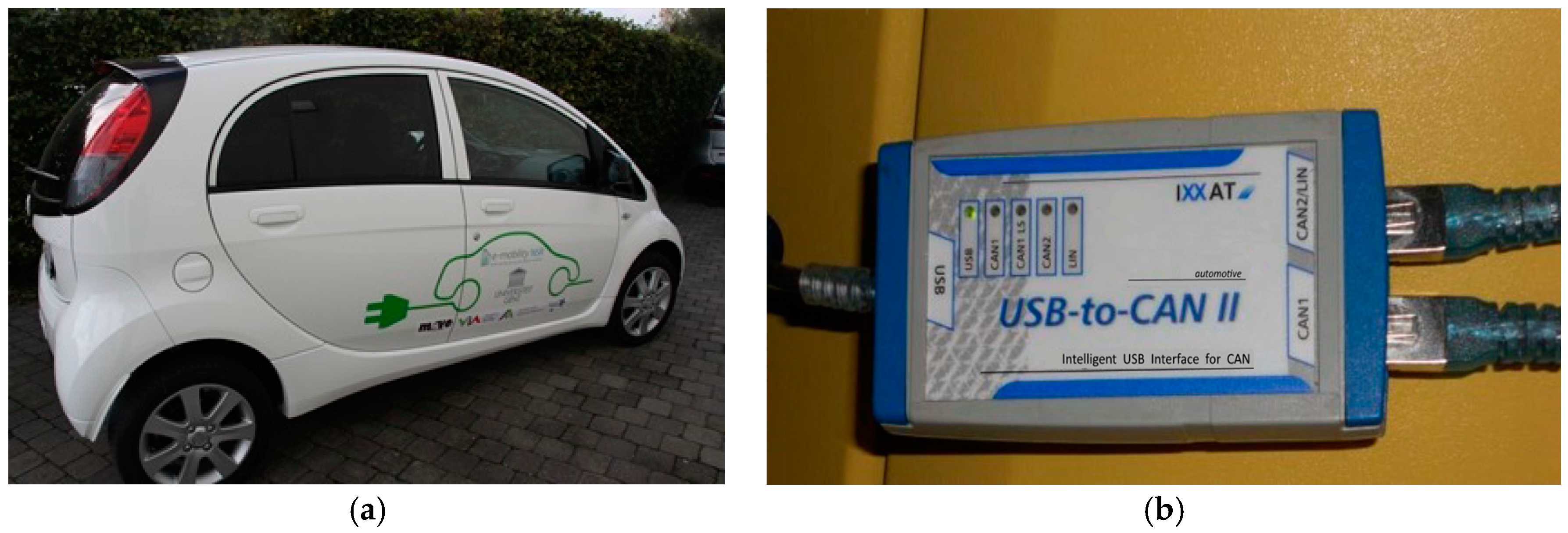
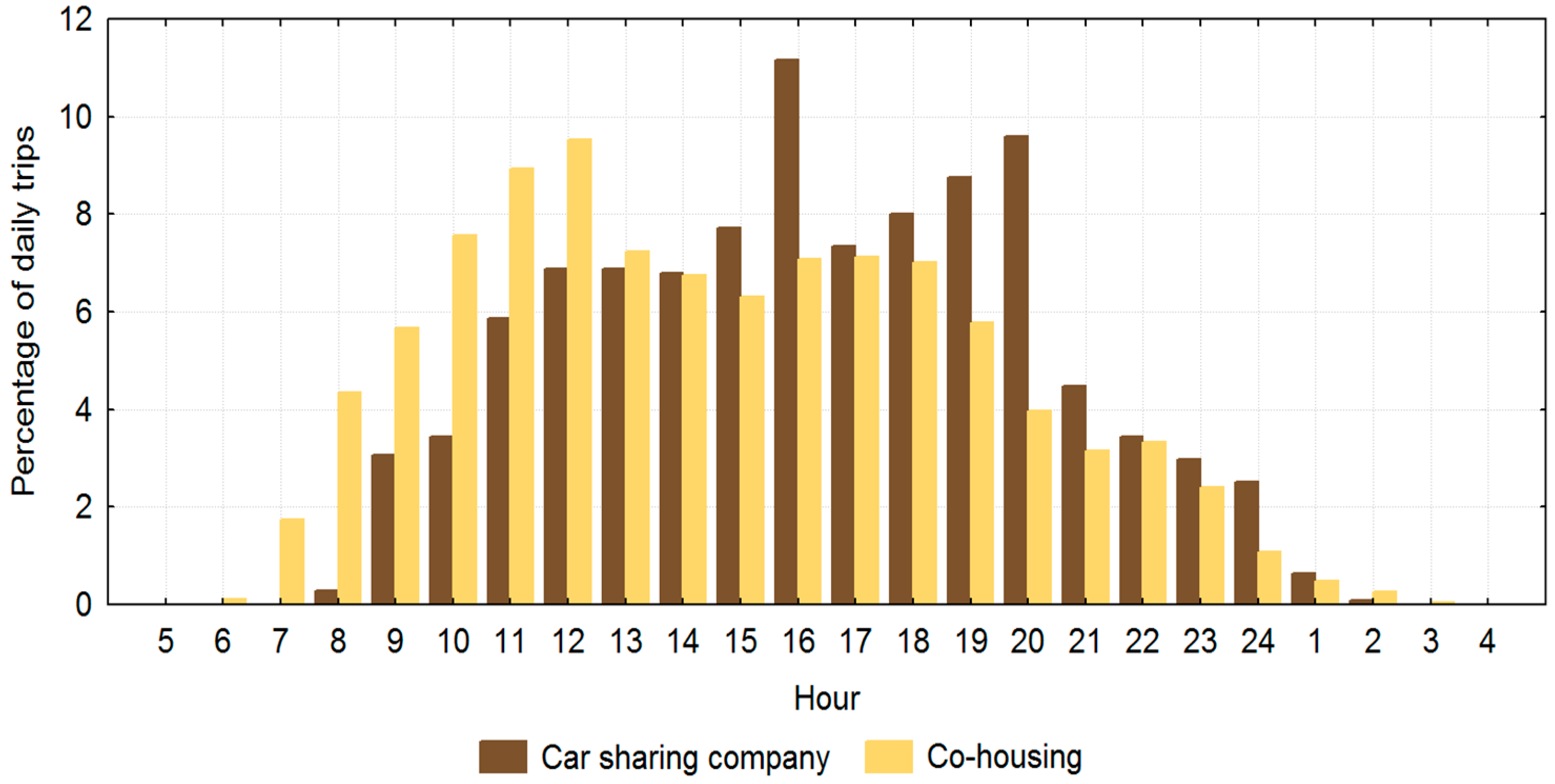
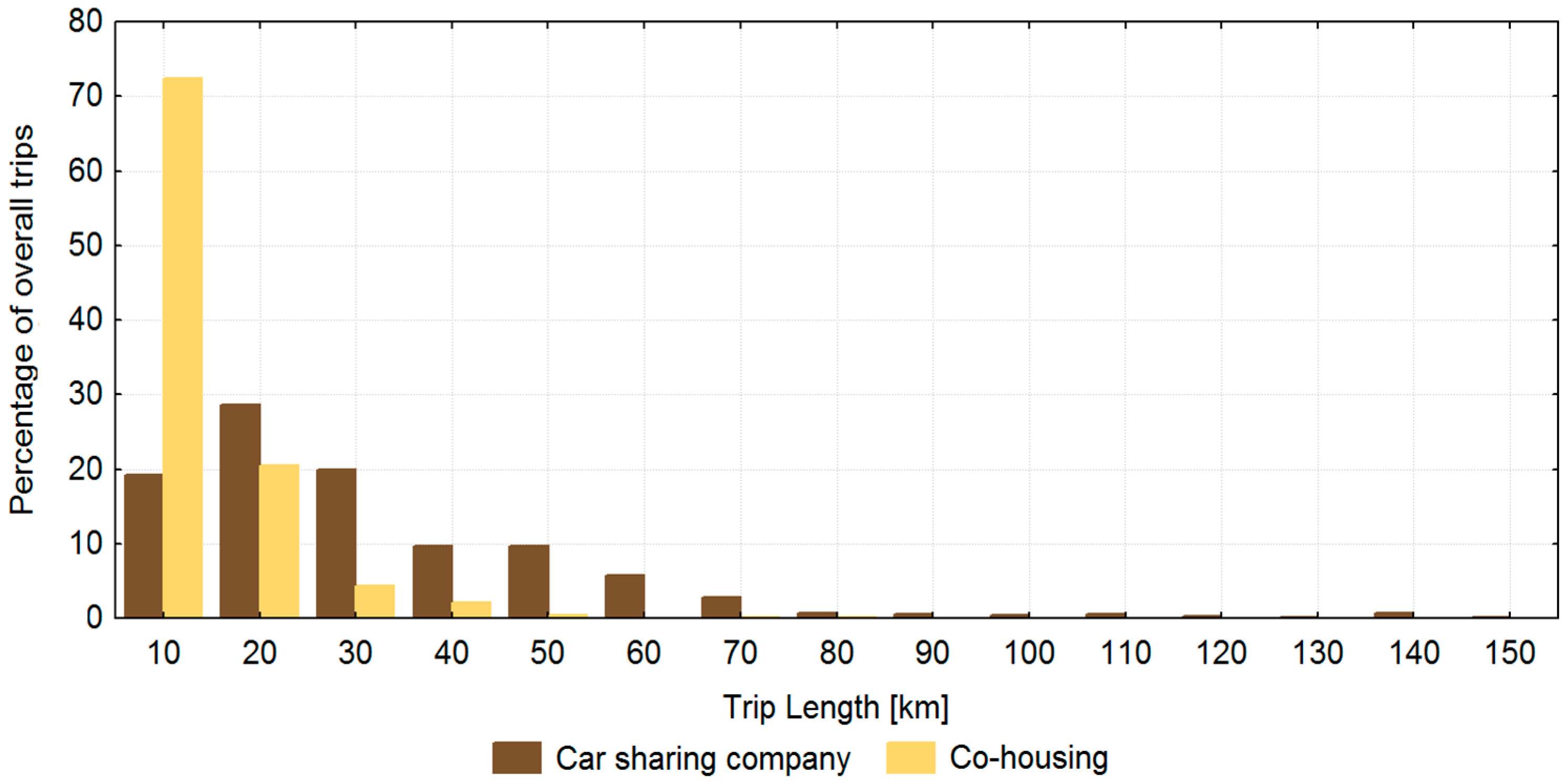

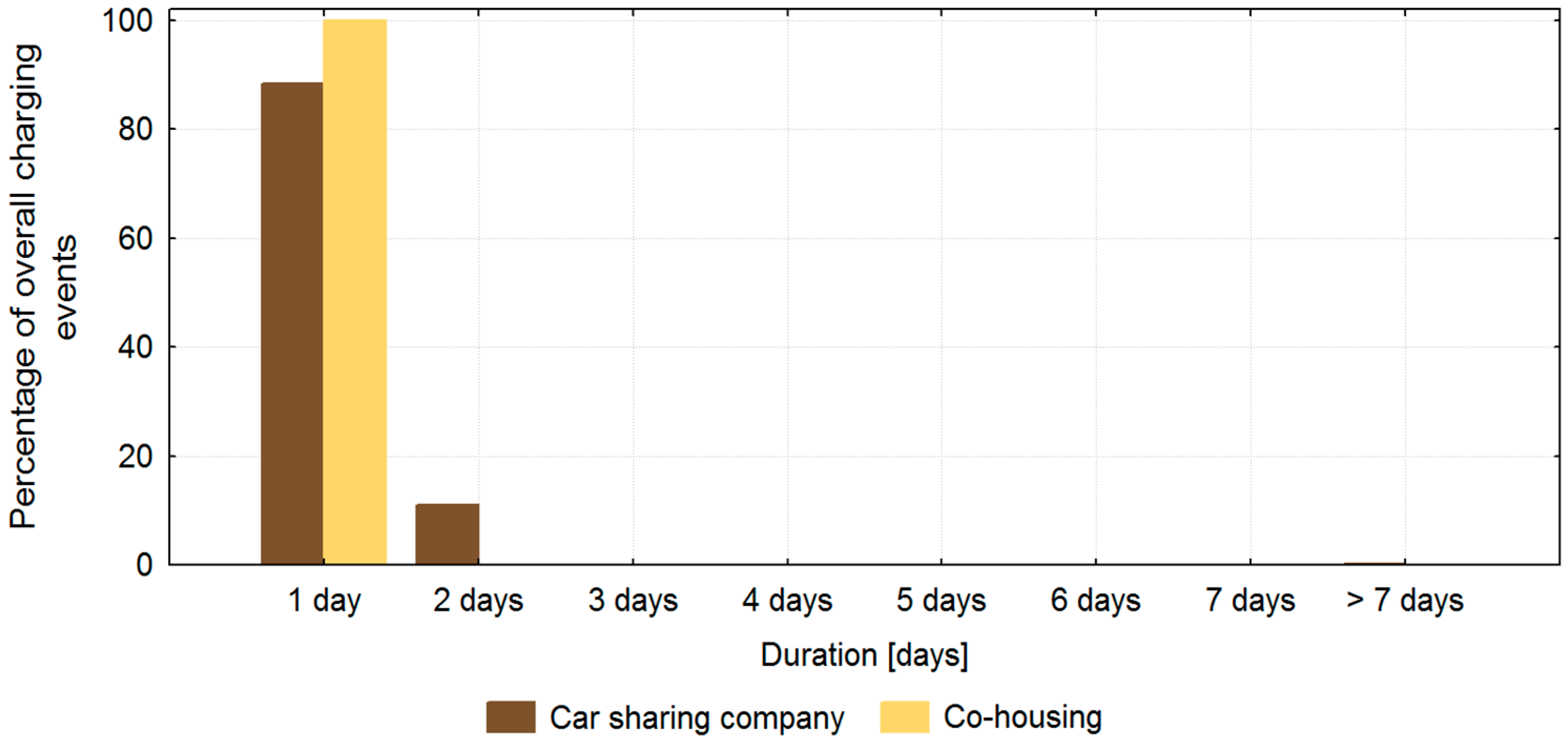
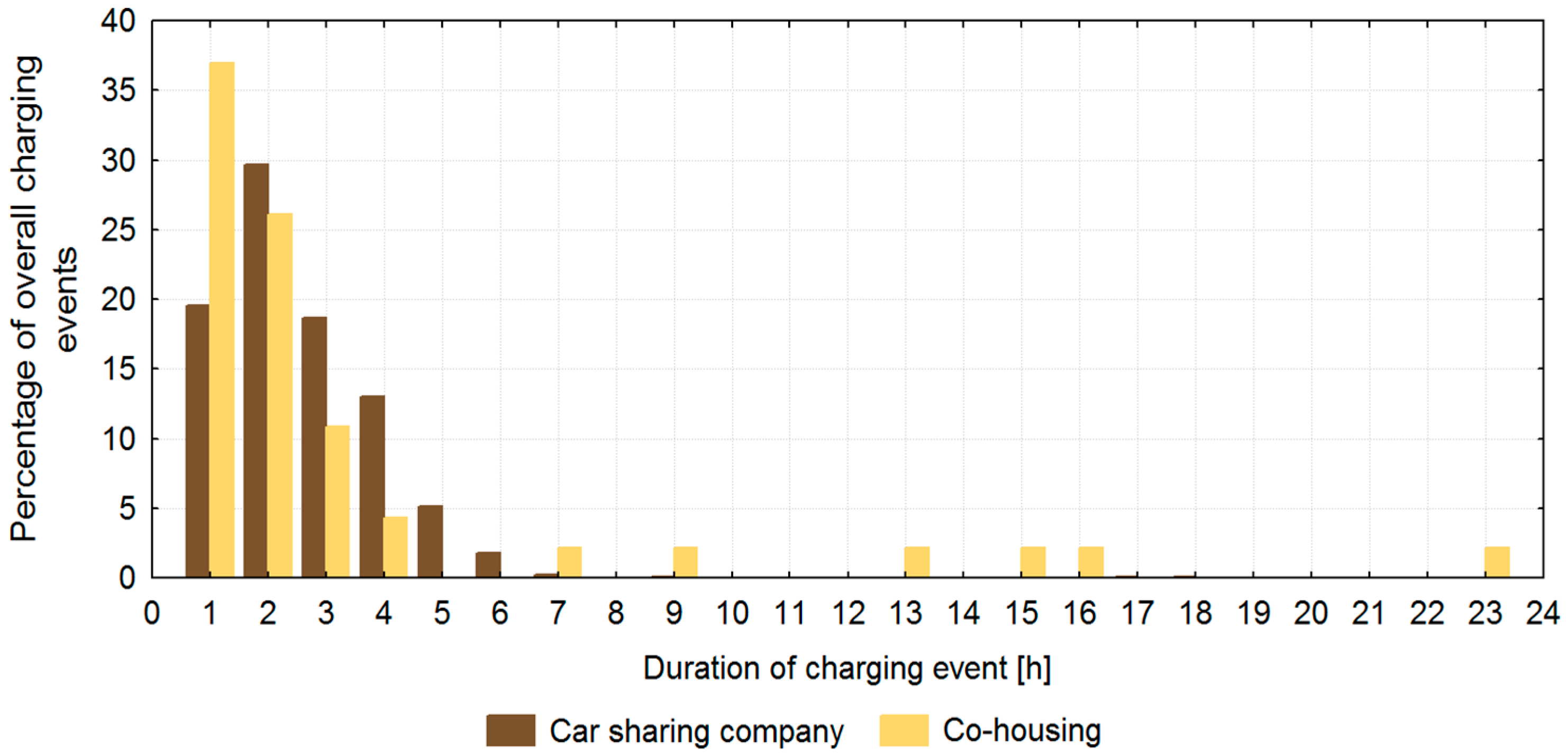

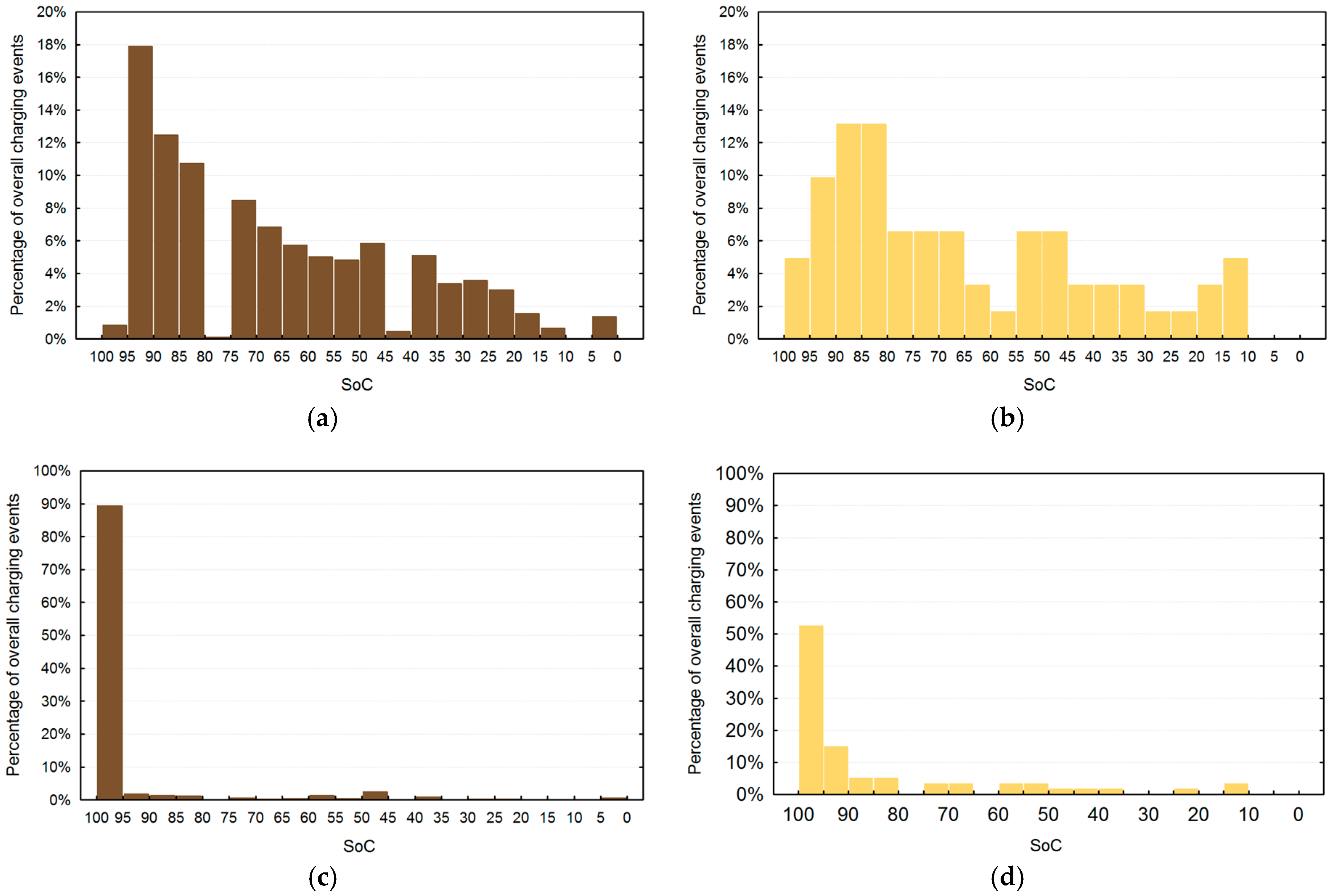
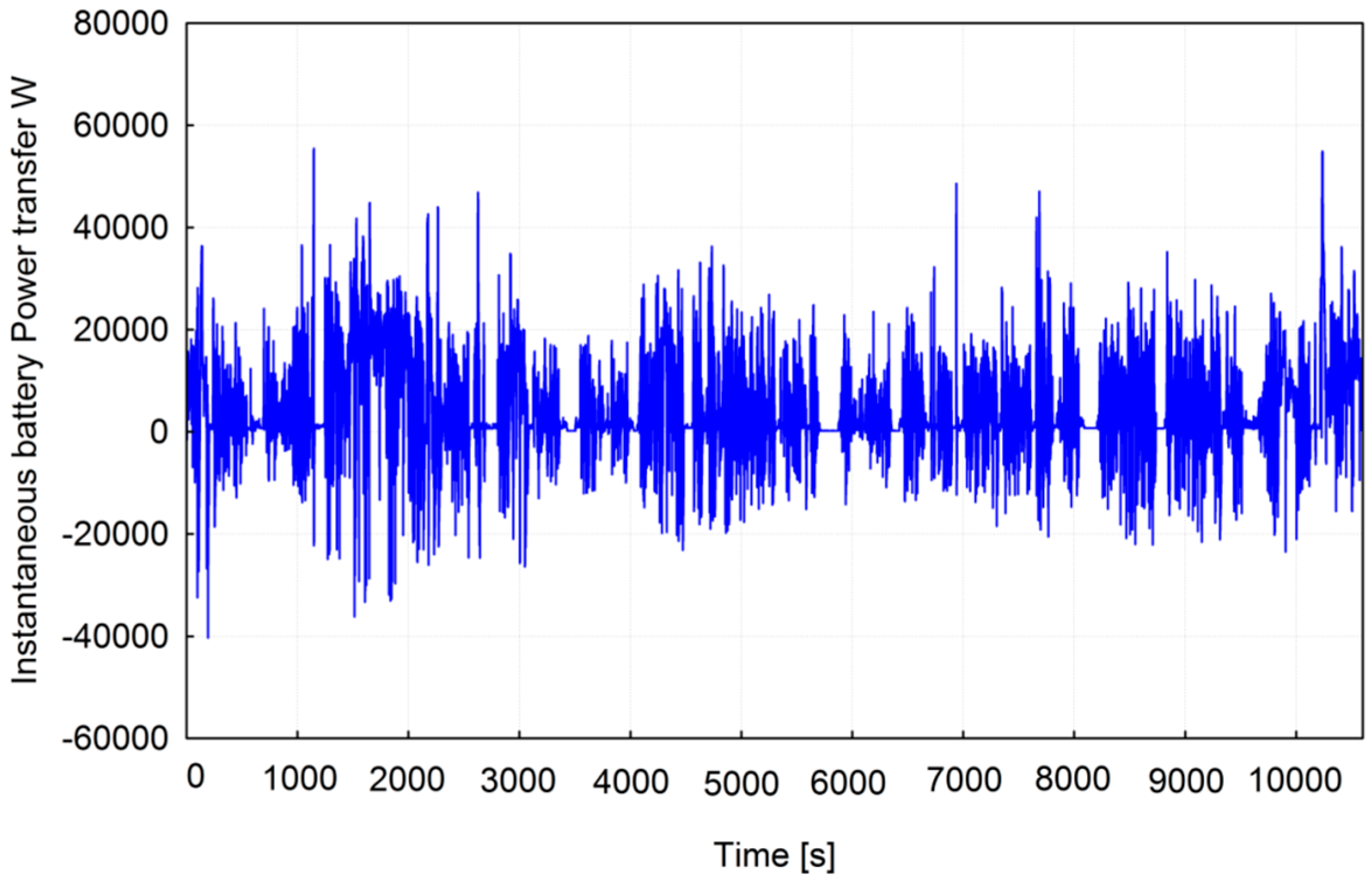
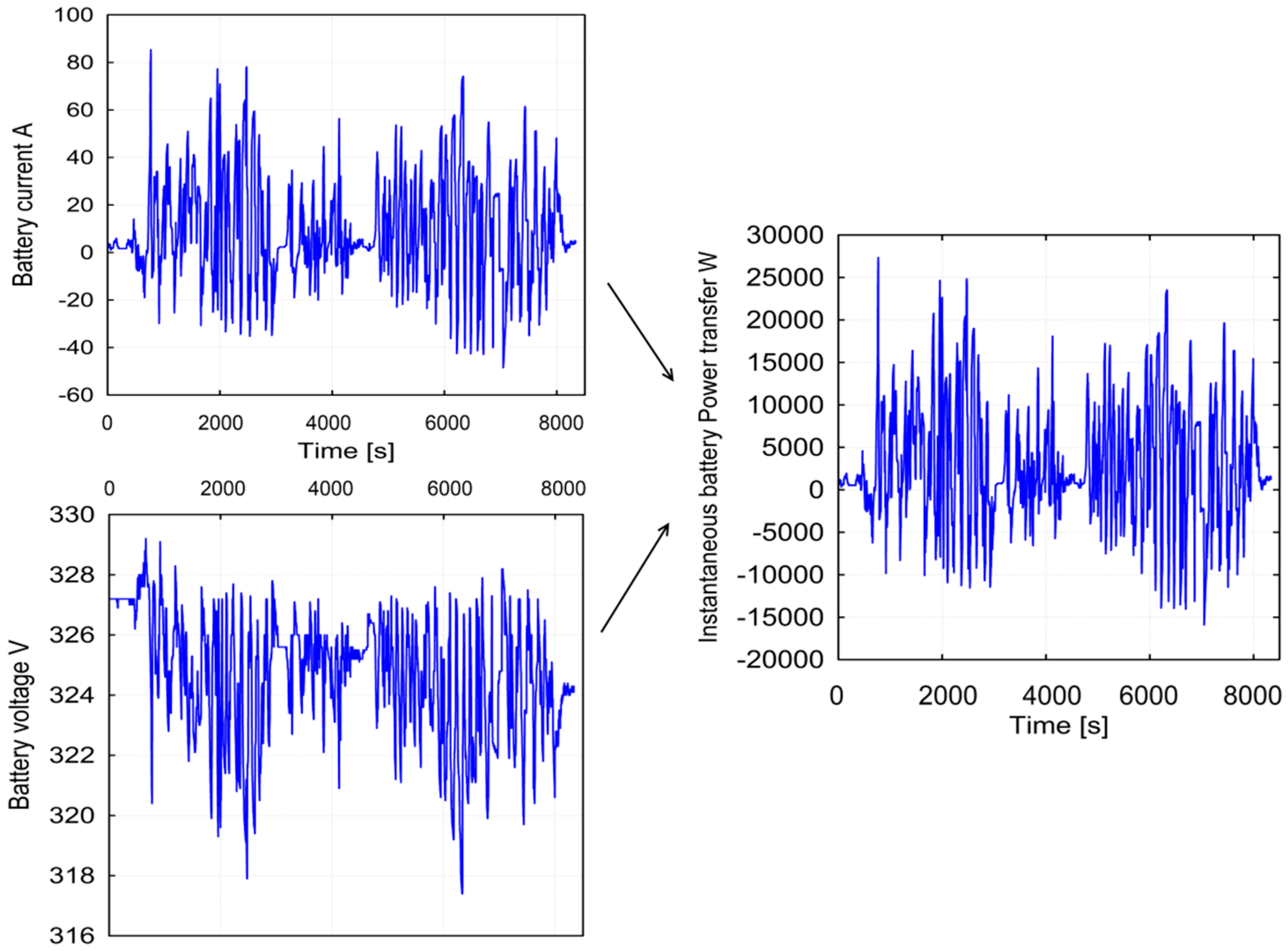

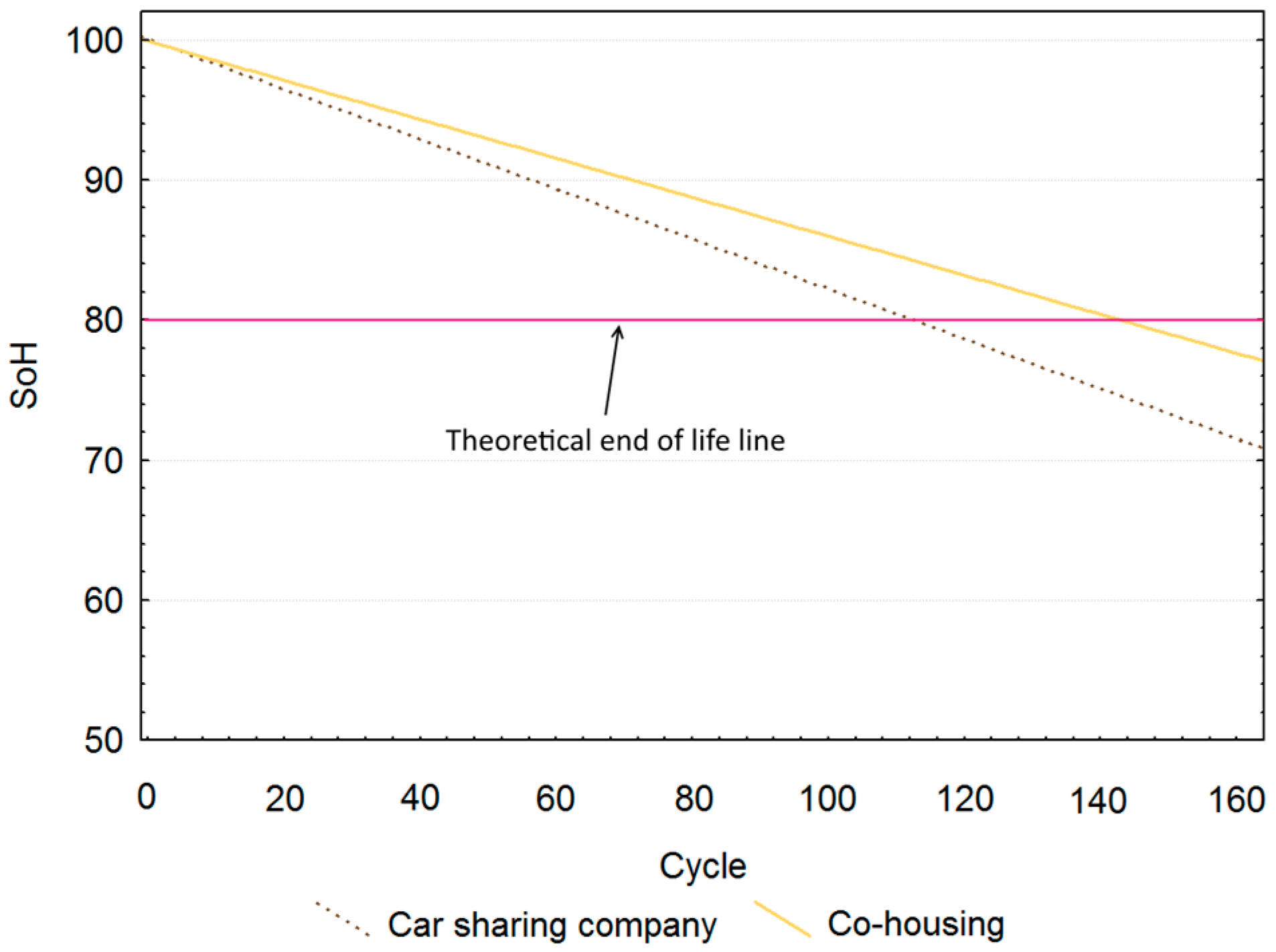
| Demographic | Co-Housing Members | Car-Sharing Company Members | |
|---|---|---|---|
| Number of users | 35 | 24,000 | |
| Users per vehicle | 12 | 28 | |
| Gender | Male | 47.06% | 58.43% |
| Female | 52.94% | 44.94% | |
| Age | 18–25 | 22.86% | 7.87% |
| 26–45 | 20.59% | 58.40% | |
| 45–65 | 55.88% | 37.10% | |
| Marital status | Single | 26.47% | 33.71% |
| Married or co-habiting | 73.53% | 65.17% | |
| Number of children | 0 | 20.59% | 65.17% |
| 1 | 20.59% | 14.61% | |
| 2 | 11.76% | 16.85% | |
| 3+ | 47.06% | 2.25% | |
| Engine | General | Battery | |||||
|---|---|---|---|---|---|---|---|
| Type | Power | Maximum Speed | Autonomy | Consumption | Type | Usable Capacity | Quoted Capacity |
| Synchronous motor/three-phase permanent magnet | 47 kW | 130 km/h | 160 km (according to Japanese 10–15 test mode) | 167 Wh/km (NEDC cycle) | Lithium-ion | 14.2 kWh | 16 kWh |
| Goodness of Fit Measure | Co-Housing | Car-Sharing Company |
|---|---|---|
| Least squares deviation | 1.605182 | 1.699434 |
| Average deviation | 0.949703 | 1.07033 |
| Relative squared error | 0.000184 | 0.00030 |
| Relative absolute deviation | 0.010116 | 0.01410 |
| Capacity Loss Element | Component | EV (Co-Housing) | EV (Car-Sharing Practice) |
|---|---|---|---|
| lcalendar | Stemp | Similar | Similar |
| SoC | In average, lower | In average, higher | |
| lcycle | Cr | Lower percentage of fast recharging | Higher percentage of fast recharging |
| btemp | Not available | Not available | |
| SoC | In average, lower | In average, higher | |
| DoD | In average, lower | In average, higher |
© 2016 by the authors; licensee MDPI, Basel, Switzerland. This article is an open access article distributed under the terms and conditions of the Creative Commons Attribution (CC-BY) license (http://creativecommons.org/licenses/by/4.0/).
Share and Cite
Semanjski, I.; Gautama, S. Forecasting the State of Health of Electric Vehicle Batteries to Evaluate the Viability of Car Sharing Practices. Energies 2016, 9, 1025. https://doi.org/10.3390/en9121025
Semanjski I, Gautama S. Forecasting the State of Health of Electric Vehicle Batteries to Evaluate the Viability of Car Sharing Practices. Energies. 2016; 9(12):1025. https://doi.org/10.3390/en9121025
Chicago/Turabian StyleSemanjski, Ivana, and Sidharta Gautama. 2016. "Forecasting the State of Health of Electric Vehicle Batteries to Evaluate the Viability of Car Sharing Practices" Energies 9, no. 12: 1025. https://doi.org/10.3390/en9121025






